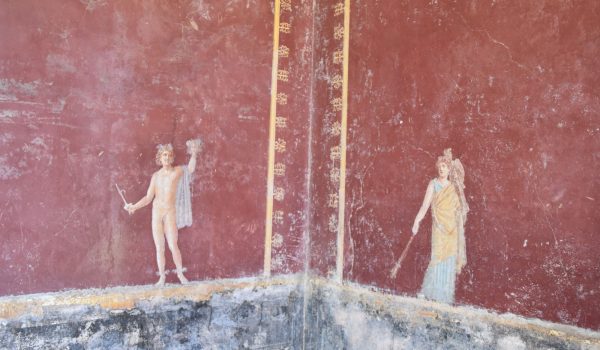The original villa, dating back to the Augustan Age centred around a tetrastyle Ionic atrium, was extended during the Claudian period to include a panoramic garden and swimming pool enclosed by a three-sided portico surmounted by a colonnade with spiral columns. These additions modified the original layout, decentralising the entrance and the original core, based on an axial plan.
The main entrance from the street, now buried, opened onto a porticoed courtyard giving access to the tablinum and then on to a tetrastyle atrium leading to four small cubicula. From here it is possible to access the thermal baths which lie at a different angle to the axis of the villa due to the alignment with the pre-existing street running in front of the building.
The thermal baths can be accessed through a small atrium decorated with scenes of cupids, wrestlers, and pugilists, renovated in the 4th style during the Claudian period.
The atrium leads to the caldarium with its large bath, the tepidarium, and the frigidarium with a bath and steps. On this side of the villa there is a section of travertine staircase that belonged to the hairpin-bending ramps connecting the villa to the flat area nearest the coast.
The exit leads into a large porticoed garden with a pool. The end wall is a semicircle and hosts a nymphaeum decorated with stucco. At the end of the side porticoes there were splendidly decorated rooms to rest and relax.
The reception hall of the villa was lavish as well, with the lower part of the walls covered with marble while frescoed on the upper half. The ceiling of the upper part of the portico, collapsed during the 1980 earthquake, was completely decorated with paintings depicting great mythological scenes.
Guide/Map Villa San Marco (download)


